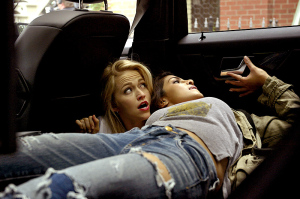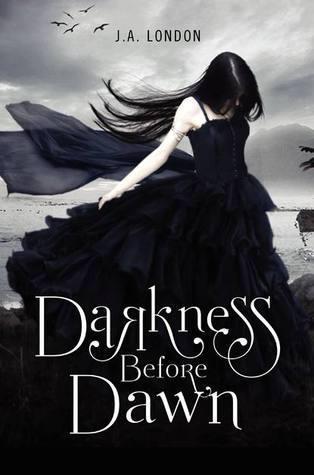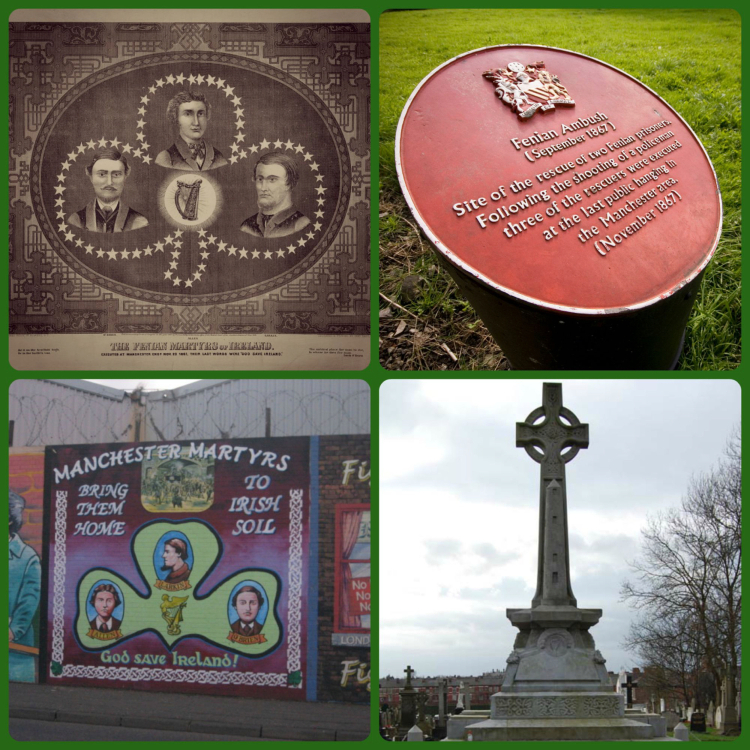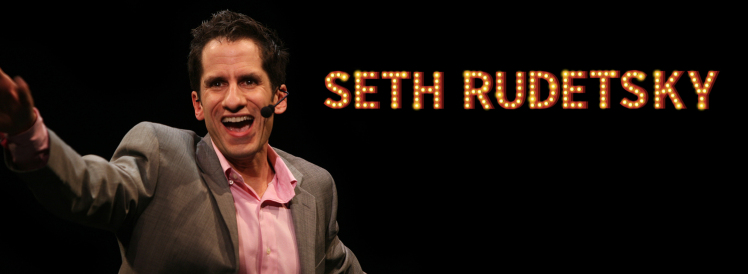Click here to read the entire transcript of Jessie’s confession.
Click here to read Jessie’s follow-up interview.
Click here to read a follow-up statement Jessie gave to his lawyer about the confession.
According to Jessie Misskelley’s June 3, 1993 confession, on the day of the crime, after he had gotten off of work and during the middle portion of the day, he(Jessie Misskelley), and his two friends, Damien Echols, and Jason Baldwin met up near Lakeshore Trailer Park, where Jason Baldwin lived. It was from there that they walked along the busy service road, to Robin Hood Hills.
In this portion of the confession, Jessie is specifically asked whose car they drove in, to which Jessie corrects Det. Gary Gitchell, saying that they didn’t drive to the crime scene, they walked there:
DETECTIVE RIDGE: Okay.
MISSKELLEY: I went with them and then I
DETECTIVE GITCHELL: Now, were you in a car? Whose car were you all in?
MISSKELLEY: We walked
DETECTIVE GITCHELL: You all walked?
MISSKELLEY: Right, we walked and then uh,
DETECTIVE RIDGE: Where did you go?
MISSKELLEY: We went up to the Robin Hood
DETECTIVE RIDGE: You went to the Robin Hood, explain to me where those woods are.
MISSKELLEY: By uh, Blue Beacon Truck Wash.
DETECTIVE RIDGE: Just a little patch of woods
MISSKELLEY: A little patch of woods
DETECTIVE RIDGE: Behind Blue Beacon?
MISSKELLEY: Behind it, right back there behind it.
 (The service road in front of Robin Hood Hills.)
(The service road in front of Robin Hood Hills.)
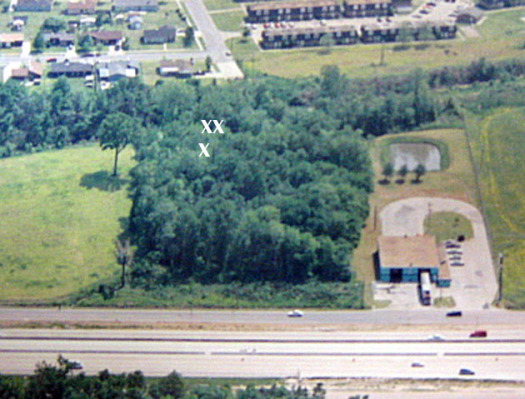 (Robin Hood Hills, a wooded area nextdoor to Blue Beacon Truck Wash.)
(Robin Hood Hills, a wooded area nextdoor to Blue Beacon Truck Wash.)
According to Jessie, the victims left their bikes near where they entered the woods, suggesting the pipe bridge, and it was from there, that Damien lured the boys across the bridge.
MISSKELLEY: They, they laid their bikes down when they come out to the, I mean, when they hollered for them to come, come out there, they
DETECTIVE RIDGE: Where did they lay their bikes down at, that’s what I’m asking?
MISSKELLEY: I don’t know where they laid their bikes down at, cause I was, I was behind Damien and nem, way, way behind them.
DETECTIVE RIDGE: Okay
MISSKELLEY: When they hollered, when they seen them boys
DETECTIVE RIDGE: The little boys came on over?
MISSKELLEY: Mm-hmm.

(Where Jessie said the victims encountered their killers.)
 (Where Jessie states the victims left their bikes.)
(Where Jessie states the victims left their bikes.)
From the criminal profile of John Douglas:
“It is my opinion the victims came into the woods of Robin Hood Hills by the most common method and that was by crossing the wood and pipe make-shift bridge. It is inconceivable that they carried their bikes across this very narrow width bridge. It is inconceivable that they carried their bikes across this very narrow width bridge. Nor is there any evidence they entered Robin Hood Hills at another location or were killed somewhere else and disposed of in Robin Hood Hills. It required much balance crossing the bridge and the chances of falling off the bridge while carrying their bicycles was high. It is my opinion the victims left their bicycles hidden in the tall grass and weeds before they each walked across the pipe bridge.”
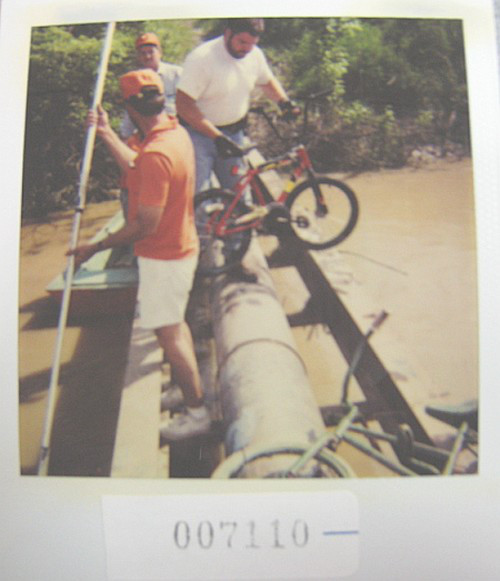 (The bikes pulled from the water next to the bridge.)
(The bikes pulled from the water next to the bridge.)
Going back to Jessie’s same statement from the June 3, 1993 confession, he specifically states that Damien called out to the boys, which caused them to come over:
MISSKELLEY: They, they laid their bikes down when they come out to the, I mean, when they hollered for them to come, come out there, they
DETECTIVE RIDGE: Where did they lay their bikes down at, that’s what I’m asking?
MISSKELLEY: I don’t know where they laid their bikes down at, cause I was, I was behind Damien and nem, way, way behind them.
DETECTIVE RIDGE: Okay
MISSKELLEY: When they hollered, when they seen them boys
DETECTIVE RIDGE: The little boys came on over?
MISSKELLEY: Mm-hmm.
Notice, he says the boys came “out there,” after they “laid their bikes down.” Then when he’s asked by Bryn Ridge if that’s what he means, Jessie agrees.
Just from this statement alone, Jessie knew that the boys laid their bikes down before crossing the pipe bridge, and described them being lured across by Damien Echols, and according to John Douglas, the victims would have left their bikes near the entrance to Robin Hood Hills, at the pipe bridge.
So, what Jessie stated was all very similar to what actually happened.
Damien himself also made this statement to the police on May 10, 1993, in which he suggested that the killer lured the victims:
DAMIEN STATED THAT HE FIGURED THAT THE KILLER KNEW THE KIDS WENT INTO THE WOODS AND EVEN ASKED THEM TO COME OUT TO THE WOODS. HE STATED THAT THE BOYS WERE NOT BIG, NOT SMART, AND THEY WOULD HAVE BEEN EASY TO CONTROL.
Police report of Damien Echols’ May 10, 1993 interview.
Damien testifying at trial in regards to this matter:
Q. You also said and told Officer Ridge, is it not
correct that you told him that the killer knew the kids
went out there, knew the kids and asked the kids to
meet them out there? Is that what you told him?
A. He asked me was that possible, and I said, “Yes.”
Q. So once again, are you saying that you didn’t say
this, that he just threw out the idea there and you
just agreed to it?
A. Right.
Q. And if he says something different, that would be,
he would be lying about it, right? You are the one
telling the truth?
A. I wouldn’t put it past him.
Q. Did you also tell him that they would be not big —
speaking of the three eight-year-olds that were
murdered — they would be not big, not smart, and easy
to control?
A. Right.
So, according to Jessie, at the pipe bridge, Damien calls out to the victims and lures the boys across and into Devil’s Den, where the bodies were later recovered by police.
 (From the bridge into Devil’s Den.)
(From the bridge into Devil’s Den.)
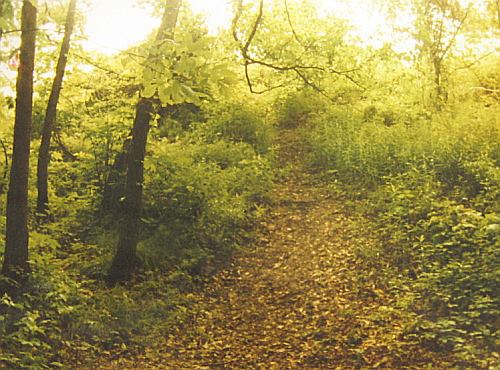 (Path leading down into Devil’s Den.)
(Path leading down into Devil’s Den.)
Once inside Devil’s Den the boys were grabbed by the three teenagers and attacked on a ditch bank, which was located next to three trees that were growing together.
Jessie described it as follows:
DETECTIVE RIDGE: So, there is like a tall bank, were you, where were you at on that bank?
MISSKELLEY: I was up there, I was standing up there on the top.
DETECTIVE RIDGE: Alright, where were they at?
MISSKELLEY: They was at the bottom.
 (Path leading down to the ditch bank below.)
(Path leading down to the ditch bank below.)

It was here, on this ditch bank where the crime occurred.
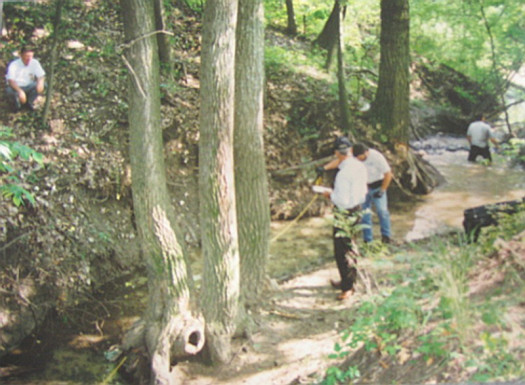
(Investigators standing on the ditch bank where the boys were attacked.)
Jessie during the confession described a vicious beating that they gave to all three of the victims on this ditch bank, though Jessie kept trying to down play his own involvement, saying he just stood by and watched while his friends did everything, occasionally slipping up such as in this example:
DETECTIVE RIDGE: Alright, when did they take their clothes off?
MISSKELLEY: Right after I, they beat up all three of them, beat them up real bad
Notice, Jessie first starts to say that he beat up the victims, using the word, “I,” then catches himself and says “they.”
Below he describes the beating, pointing out which victims for the detectives using a photo from a newspaper:
MISSKELLEY: When I was there, I saw Damien hit this one, hit this one boy real bad, and then uh, and then he started screwing them and stuff and then uh,
DETECTIVE RIDGE: Alright, you got in front of you a picture, that was taken out of the newspaper I believe, it’s got three boys and these are the three boys that were killed on that date in Robin Hood Woods, okay. Which one of those three boys is it you say Damien hit? The third picture (Jessie seems to be affirming this in the background), which will be
MISSKELLEY: Michael Moore
DETECTIVE GITCHELL: This boy right here,
MISSKELLEY: Yeah,
DETECTIVE GITCHELL: Alright, that’s uh the Byers boy,
MISSKELLEY: Christopher
DETECTIVE GITCHELL: That’s who you are pointing at?
MISSKELLEY: Mm-hmm.
DETECTIVE RIDGE: If you read the captions, the grisly slain from left, 8 year old Michael Moore, Steven Branch and Christopher Byers. (Jessie seems to be echoing these names as Ridge speaks). Okay, so you saw Damien strike Chris Byers in the head?
MISSKELLEY: Right
DETECTIVE RIDGE: What did he hit him with?
MISSKELLEY: He hit him with his fist and bruised him all up real bad, and then um Jason turned around and hit Steve Branch
 (Newspaper photo of the victims used for identification by Jessie.)
(Newspaper photo of the victims used for identification by Jessie.)
The victims were all in-fact beaten severely. Chris Byers had bruises and there were injuries all over his body and the bodies of Stevie Branch and Michael Moore.
Upon questioning, Jessie also admitted they used sticks to beat the victims, but only claimed that Damien used one to beat the boys:
DETECTIVE GITCHELL: Did you ever use, did anyone use a stick and hit the boys with?
MISSKELLEY: Damien had kind of a big old stick when he hit that first one, after he hit him with his fist and knocked him down and then he got him a big old stick and hit him.
DETECTIVE GITCHELL: What did the stick look like, I mean was it like a, a, a big log like that or is it, is it a stick?
MISSKELLEY: It, I would say it was about that, about that big around, I would say about that long.
DETECTIVE GITCHELL: Okay
DETECTIVE RIDGE: About the size of a baseball bat, maybe just a little bit bigger around?
MISSKELLEY: Mm-hmm. That’s about right.
DETECTIVE RIDGE: That’s what you’re describing with your hands, right?
MISSKELLEY: Right
In fact a large baseball bat like stick was found right next to Michael Moore’s body with a shirt from one of the victims wrapped around it by his killer.
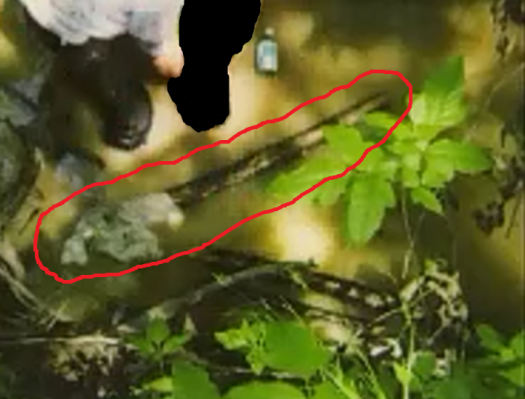
This stick was labeled in evidence as E-139 and matched the description of the weapon Jessie alleged was used.

There was however a second stick recovered at the crime scene which was also strange. It had portions missing like someone had handled it, and it was found next to the bodies of Christopher Byers and Stevie Branch.
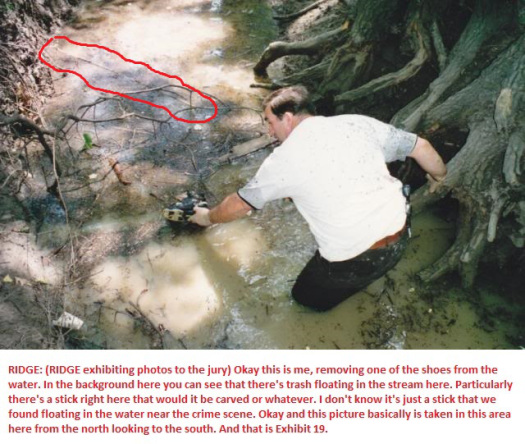
This stick was labeled as E-17, and matched up to some of the injuries inflicted on Michael Moore, Stevie Branch, and Christopher Byers.
In a statement following his June 3, 1993 confession, Jessie described the stick Damien used differently, giving a description that matched to E-17:
STIDHAM: Okay. You remember there being a stick out there that day in the creek? One that was kind of long and skinny looked like a maybe a broom handle? But it wasn’t a broom handle it was a stick that maybe the bark –
JESSIE: I don’t – I – never seen one.
STIDHAM: – stripped off of it?
JESSIE: I don’t remember seeing one. I remember Damien carried a one, a stick, a lot. He carried a stick a lot.
STIDHAM: What did it look like?
JESSIE: It was grooved in the handles and stuff, you know, carved like.
STIDHAM: Carved? Let just try and draw a picture of it here. I don’t – You don’t see a pencil in here anywhere do you?
JESSIE: On the desk.
STIDHAM: Well, imagine a broomstick, uh, you know a broom stick is obviously made out of something mechanical – a wood lathe. This is kind of a long, skinny stick, and then there’s places where the bark has been peeled off. And it’s like stripes. Does that sound familiar?
JESSIE: Uh-huh. Yeah. I’d say it’s about – good bit longer than that.
STIDHAM: You’re saying Damien carried that around a lot?
JESSIE: Yeah, he carried it around a lot – (inaudible)
 (E-17 along with E-138 and E-139, which were the two other sticks recovered by the police.)
(E-17 along with E-138 and E-139, which were the two other sticks recovered by the police.)
Jessie in another statement given after his conviction, told the prosecution, that he and Damien had attacked the victims with sticks, thus explaining why Jessie told his lawyer that Damien used E-17 to strike the victims, yet described Damien as using E-139. In reality it was Jessie who used E-139, the large baseball bat like weapon, but in his June 3, 1993 statement he was trying to shift all the blame onto Jason and Damien.
From Jessie’s February 17, 1994 statement, in which he discusses the sticks with Prosecutor, Brant Davis.
DAVIS: Ok. Were they, at some point did they get hit with anything besides your fist?
MISSKELLEY: Stick.
DAVIS: Who hit’m with a stick?
MISSKELLEY: Damien, I hit, I hit one of’m with a stick…
Now, getting back to Jessie’s June 3, 1993 statement, in which Jessie stated that the first victim that got struck really bad, was Christopher Byers:
DETECTIVE GITCHELL: This boy right here,
MISSKELLEY: Yeah,
DETECTIVE GITCHELL: Alright, that’s uh the Byers boy,
MISSKELLEY: Christopher
DETECTIVE GITCHELL: That’s who you are pointing at?
MISSKELLEY: Mm-hmm.
DETECTIVE RIDGE: If you read the captions, the grisly slain from left, 8 year old Michael Moore, Steven Branch and Christopher Byers. (Jessie seems to be echoing these names as Ridge speaks). Okay, so you saw Damien strike Chris Byers in the head?
Jessie stated that it was Christopher Byers who first got struck in the head with a stick by Damien, which he described for his lawyer as being E-17, the thin stick that was missing bark on it:
MISSKELLEY: Damien had kind of a big old stick when he hit that first one, after he hit him with his fist and knocked him down and then he got him a big old stick and hit him.
Byers did in-fact have a head injury that was consistent with E-17 on the top of his head.
The Byers head injury.
Click here to read more about the stick injuries and evidence.
Going back to Jessie’s confession, he stated that the victims weren’t even tied up until later on, when the victims were all about to be tossed into the ditch, saying that they were just beaten very badly and held down by their killers:
MISSKELLEY: They beat them up so bad so they can’t hardly move. They hadn’t tied, had their hands tied down and he just sit on them.
There was in-fact numerous amounts of evidence on the bodies of both Chris Byers and Stevie Branch that they had been restrained prior to being tied up.
Found on Christopher’s thigh were several bruises:
Bruises on Christopher’s thigh.
Another photo of Christopher’s bruises.
Located on Christopher’s mouth were also fingernail marks from where someone had tried to cover his mouth:
The fingernail marks.
Located on the body of Stevie Branch was an odd mark on his thigh, consistent with the stick known as E-17 being held down across his thigh.
Stevie’s thigh injury.
After being beaten, Jason and Damien had started stripping Christopher Byers and Stevie Branch, while Jessie was attacking Michael Moore.
DETECTIVE RIDGE: Alright, when did they take their clothes off?
MISSKELLEY: Right after I, they beat up all three of them, beat them up real bad
Jessie said then that after Branch and Byers were beaten and stripped, that Jason and Damien began cutting them with a single knife:
DETECTIVE RIDGE: Okay, now when it’s going on, when it’s taking place, you under. . . you saw somebody with a knife. Who had a knife?
MISSKELLEY: Jason
DETECTIVE RIDGE: Jason had a knife. What did he cut with the knife? What did you see him cut or who did you see him cut?
MISSKELLEY: I saw him cut one of the little boys
DETECTIVE RIDGE: Alright, where did he cut him at?
MISSKELLEY: He was cutting him in the face.
DETECTIVE RIDGE: Cutting in the face. Alright, another boy was cut I understand, where was he cut at?
MISSKELLEY: At the bottom
DETECTIVE RIDGE: On his bottom? Was he face down when he was cutting on him, or
MISSKELLEY: Mm-hmm.
DETECTIVE GITCHELL: Now you’re talking about bottom, do you mean right here?
MISSKELLEY: Mm-hmm.
DETECTIVE GITCHELL: In his groin area?
MISSKELLEY: (No audio register)
DETECTIVE GITCHELL: Okay
DETECTIVE RIDGE: Do you know what his penis is?
MISSKELLEY: Mm-hmm, that’s where he was cut at.
DETECTIVE RIDGE: That’s where he was cut.
DETECTIVE GITCHELL: Which boy was that?
MISSKELLEY: That right there.
DETECTIVE GITCHELL: You’re talking about the Byers boy again?
MISSKELLEY: Mm-hmm.
DETECTIVE GITCHELL: Okay
DETECTIVE RIDGE: Are you sure that he was the one that was cut?
MISSKELLEY: That’s the one that I seen them cutting on.
DETECTIVE RIDGE: Alright, you know what penis is?
MISSKELLEY: Mm-hmm.
DETECTIVE RIDGE: Alright, is that where he was cutting?
MISSKELLEY: That’s where I seen them going down at, and he was on his back. I seen them going down right there real close to his penis and stuff and I saw some blood and that’s when I took off.
DETECTIVE GITCHELL: Was uh, were you all close to the creek at that point?
MISSKELLEY: Yes sir
DETECTIVE GITCHELL: Where, where was the little boy actually at?
MISSKELLEY: He was close by
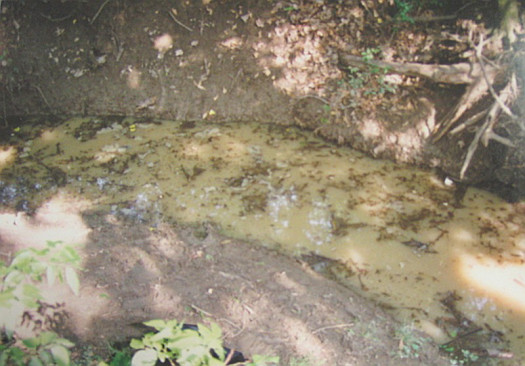 (Location where Chris Byers and Stevie Branch were cut up.)
(Location where Chris Byers and Stevie Branch were cut up.)
The fact that Jessie also picked out Jason Baldwin as the one who had the knife was interesting, because one would expect, that if you were going to falsely confess to watching Damien and Jason commit the murders, that it would be Damien, the guy who’s the supposed leader here to have used the knife.
Yet, it was Jason Baldwin, who had a knife hidden in the lake behind his trailer.
 (Jason’s knife recovered from the lake behind his trailer.)
(Jason’s knife recovered from the lake behind his trailer.)
Click here to read about Jason and the lake knife.
Click here to read more about the knife injuries to the victims.
Jessie further described the murder weapon to his lawyer, months before the police ever recovered it behind Jason’s trailer, saying that he hadn’t seen it before, but thought it might have been a folding knife, but then describes it as very large, with a blade over 6 inches long, and the knife being even longer when you counted the handle.
Here his lawyer, Dan Stidham asks him about the knife:
STIDHAM: About 4 or 5 inches, the whole knife
JESSIE: Oh, probably about that long. (Indicating)
STIDHAM: How long was the blade?
JESSIE: Not counting the ends of it, I would say the blade was about something like that. (Indicating)
STIDHAM: Six inches or so?
JESSIE: Without counting the whole thing.
Jessie was wrong on it being a folding knife, but right on the length and description of the blade.
Jessie also provided more details of the castration to his lawyer following his confession to the police:
STIDHAM: Was there a lot of blood there on the ground?
JESSIE: I don’t know –
STIDHAM: – out there where they were hitting them with sticks and stuff?
JESSIE: Yeah, there was a lot of blood.
STIDHAM: A little bit or a whole lot or …?
JESSIE: I’d say a lot.
STIDHAM: Okay. And that was at the low bank of the creek –
JESSIE: Uh-huh. (Affirmatively indicating)
STIDHAM: – which would be on this side going toward Blue Beacon?
JESSIE: Right.
STIDHAM: That’s where actually all the hitting and cutting took place?
JESSIE: Yeah.
STIDHAM: Then where the little boy was when Jason cut him? Was he laying on the ground there? Or –
JESSIE: He was laying on the ground there. Can’t remember whereabouts, not unless if I was there to see it I could say whereabouts.
STIDHAM: Okay. And when he cut his thing off you don’t know what happened to it, did you see him throw it?
JESSIE: I seen him sling his arm that way. (Indicating)
STIDHAM: Was it towards the creek or towards that way, or?
JESSIE: Towards, like, the woods and stuff.
STIDHAM: So he didn’t throw it like toward the creek?
JESSIE: Huh-uh. (Negatively indicating)
Jessie had also been able to pick out which two victims had been mutilated with a knife and which parts on them had been cut, which was all factual. Jessie even knew Jason had the murder weapon.
So, after witnessing Chris Byers getting castrated, Michael Moore had gotten free, with Jessie stating that he(Jessie) had to chase him down, because he was starting to get away.
MISSKELLEY: Then the other one took off, Michael uh Moore took off running, so I chased him and grabbed him and held him, til they got there and then I left.
Jessie, in his June 3rd statement kept trying to say to the police that he did not participate, and that he just handed off Moore to his buddies, Jason and Damien and then left, but continued to keep adding additional details. Upon questioning by police, he suggested that when Moore was caught, that they were at a second location, seeming to suggest a different ditch bank located on the other side of the water.
Jessie noticably said he, “held him, til they got there,” indicating that he was in a different location than Jason and Damien.
In this exchange, Jessie seems to further describe the second ditch bank:
DETECTIVE RIDGE: Can you describe to me what in those woods, what’s the location where you were?
MISSKELLEY: Uh,
DETECTIVE RIDGE: Is there a path that you go down?
MISSKELLEY: Uh, down a little path
DETECTIVE RIDGE: Alright, where does that path go to?
MISSKELLEY: It leads out there close to the uh field, close to the interstate.
DETECTIVE RIDGE: Okay
MISSKELLEY: That’s where I was at.
DETECTIVE RIDGE: Alright.
MISSKELLEY: I was close by the interstate.
 (Second ditch bank shown on the left side of the photo. Other bank is on the right, behind the three trees in the middle of the photo.)
(Second ditch bank shown on the left side of the photo. Other bank is on the right, behind the three trees in the middle of the photo.)
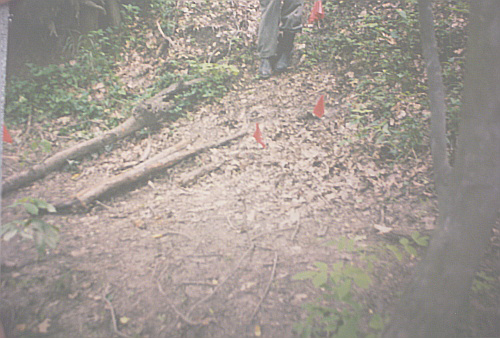 (The second ditch bank.)
(The second ditch bank.)
This second ditch bank was right next to a path out of the woods, which led into a field directly next to the service road.
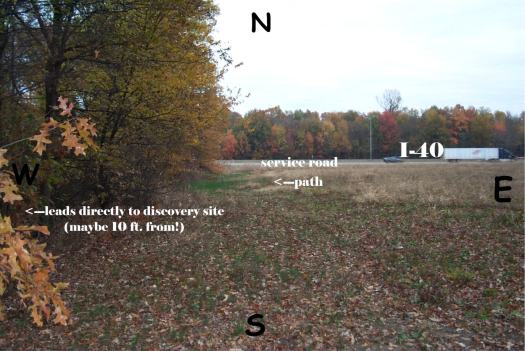 (The path out of the woods.)
(The path out of the woods.)
During questioning on this subject, Det. Ridge seems to get Jessie confused on where Michael Moore was fleeing to exactly:
DETECTIVE RIDGE: When he hits the first boy and then Jason hits another boy, and one takes off running,
MISSKELLEY: And the other takes. . .
DETECTIVE RIDGE: Where does he run to?
MISSKELLEY: That one, he runs out, going out the, out the park and I chased him and grabbed him and brought him back.
DETECTIVE RIDGE: Which way does he go, I mean, does he go on back towards where the houses are
MISSKELLEY: He goes on back. . .
DETECTIVE RIDGE: He’s going to Blue Beacon, is he going out towards the fields,
MISSKELLEY: He’s going. . .
DETECTIVE RIDGE: Where’s he running to?
Jessie then responds during this line of questioning that Moore was running back to his house:
MISSKELLEY: Towards the houses.
DETECTIVE RIDGE: Towards the houses?
But from the context it becomes obvious that Jessie is just saying where he assumed Moore was trying to go, not where he chased him.
Jessie had actually chased him across the ditch, but consistently tried to deny that he went into the water to kill the boys, but also kept slipping up on that matter.
Here, in this example, Jessie states that when he left the crime scene his clothes were wet and muddy:
DETECTIVE GITCHELL: Did you have some blood on your clothes?
MISSKELLEY: I didn’t have no blood on them, I wasn’t, I didn’t get close to them.
DETECTIVE GITCHELL: Were your clothes wet still?
MISSKELLEY: Mm-hmm, they were damp.
DETECTIVE GITCHELL: Muddy?
MISSKELLEY: Mm-hmm.
Yet in this example, he states that he did get into the ditch, but… prior to when the victims showed up:
DETECTIVE RIDGE: Okay, the night you were in these woods, uh had you all been in the water?
MISSKELLEY: Yeah, we’ve been in the water, we were in it that night, playing around in it.
DETECTIVE RIDGE: You were playing around in the water? Alright, what were you doing in the water?
MISSKELLEY: Just
DETECTIVE RIDGE: Besides just playing, the little boys, had they been in the water? Did they get into the water with you all?
MISSKELLEY: No, they didn’t get into the water with us
DETECTIVE RIDGE: Okay, what were you doing in the water?
MISSKELLEY: We were just sitting there, throwing stuff at each other.
It was obvious that Jessie had gotten muddy from the crime, not because he had been “playing” in the water with his pals.
Criminal Profiler, John Douglas, discussing the murders in the documentary, “West of Memphis”:
“To do what he did to the children, hide the clothing, and hide the children–he got in the water, he got muddy.”
Jessie Had traveled across the ditch shown below.


(Sgt. Mike Allen trying to cross the ditch without stepping in the water.)
Luminol reactions further found blood on this ditch bank in three different spots.
 (Moore’s body shown as number 6 on the diagram.)
(Moore’s body shown as number 6 on the diagram.)
Of these spots, one location, was where the police set Moore’s body after they pulled him from the ditch.
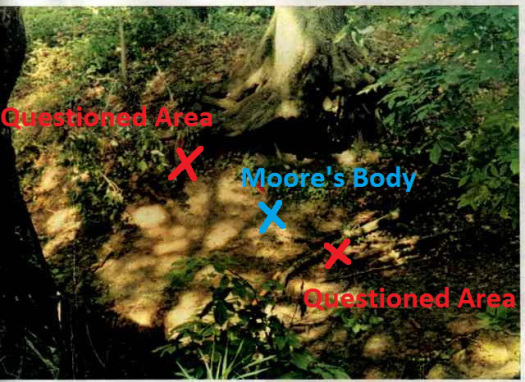 (Middle location is where the police set Moore’s body.)
(Middle location is where the police set Moore’s body.)
Of the two remaining spots, one location on that ditch bank remained of interest, where it appeared to show that a bloodbath took place. A pooling or collection of blood determined to measure roughly 3ft in diameter was located, which was about the size of a child. This was likely the site of Moore’s murder, as his dead body was found in the water right in front of this ditch bank.
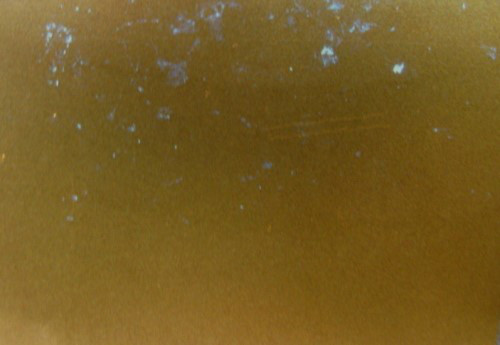 (Luminol photo of the questioned location, showing blood all over this location.)
(Luminol photo of the questioned location, showing blood all over this location.)
Further Moore’s body was located 27ft away from the bodies of Christopher Byers and Stevie Branch, which is shown in diagrams from the crime scene and in crime scene notes.
 (Police diagram of the crime scene showing the locations of the bodies.)
(Police diagram of the crime scene showing the locations of the bodies.)
From the crime scene notes, it states, that body #2 was located 27ft away from that of body #1(Michael Moore).
The exact quote from the notes:
#2 Body 27’ South of #1 Body
Link to the crime scene notes.
What Jessie had described, his chasing of Michael Moore to prevent him from escaping, had explained why Moore was on the other ditch bank, and why his body was found 27ft away from the location where his friends were murdered.
And according to Jessie, after Moore tried to escape, they beat him and stripped him as well, then decided to tie up all three of the victims to make sure they couldn’t get away.
The portion of Jessie’s confession where he states that the boys were all already beaten unconscious when they were tied up:
DETECTIVE GITCHELL: I’ve got a feeling here, you’re not quite telling me everything, now we’re, you know we’re recording everything, so this is very, very important to tell us the entire truth. If you were there the whole time, then tell us that you were there the whole time, don’t leave anything out. This is very, very important, now just tell us the truth.
MISSKELLEY: I was there until they tied them up and then that’s when I left, after they tied them up, I left.
DETECTIVE GITCHELL: But, you saw them cutting on the boys,
MISSKELLEY: I saw them cutting on them, and then they, they
DETECTIVE GITCHELL: So, what else, what else left is there, after that?
MISSKELLEY: Then they laid the knife down beside them and I saw them tying them up and then that’s when I left.
DETECTIVE RIDGE: Were the boys conscience (sic) or were they
MISSKELLEY: They were unconscious then
DETECTIVE RIDGE: Unconscious
Jessie lastly said that before he left the crime scene, that Jason and Damien pulled the victims into the water, where they drowned.
DETECTIVE GITCHELL: Did you ever see the boys in the water?
MISSKELLEY: (unintelligible, yawn?) Uh, yep, down by the water.
DETECTIVE GITCHELL: Alright, how did the boys get in the water?
MISSKELLEY: They um, pulled pulled them in there, to the water.
DETECTIVE GITCHELL: Alright, when you say they who, who is it that pulled them into the water?
MISSKELLEY: Jason and uh, Damien.
Notice, Gitchell did not ask if the boys were pulled into the water, just if he had seen the boys in the water. And Jessie indicates that they were pulled in.
Following this, Jessie fled the crime scene, leaving out the path near where Moore was killed, and out to the service road. It was at this time that he fled the crime scene and walked home.
 (Route out of the woods and to the service road.)
(Route out of the woods and to the service road.)
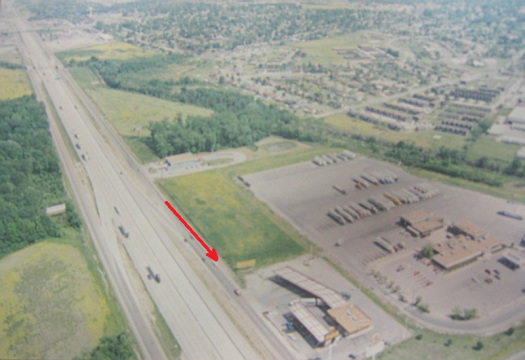 (Route back toward Jessie’s home.)
(Route back toward Jessie’s home.)
Following this confession, where Jessie insisted to police that he was only a witness in the murders and had only helped chase down one victim, Jessie’s father went on the news and also stated that his son was only a witness to the murders.
Transcript from the interview, which aired on June 7, 1993:
Misskelley Sr. : “I don’t believe he did it. ’cause he–
Reporter : “Do you think he might have been with them when they did it?”
Misskelley Sr. : “Yeah he could have been with ’em. But he did not have anything to do with it, I don’t believe.”
Link to the news clip:
Jessie Misskelley Sr. stating that Jessie witnessed the murders.
In Jessie’s June 3, 1993 police confession, which led to his arrest and the arrests of Jason and Damien, Jessie knew these key facts:
Jessie maintained his confession for at least 3 months with his lawyer, Dan Stidham, even discussing with him taking a guilty plea in exchange of a lighter sentence.
STIDHAM: Okay. I’m going to leave it on. Uh, you realize that I’m taping this conversation? Okay? Uh, he called and said that if you’d be willing to testify and help with the case that he would, uh, recommend that you get life in prison with the possibility of getting paroled. He would waive the death penalty, you wouldn’t have to worry about the jury giving you a death sentence, and you wouldn’t have to worry about staying in prison without the possibility of parole. He said that he would let you basically be sentenced to first degree murder, uh, and give you life with the possibility of getting paroled some day. Now. Let me explain to you, basically what that means. Life in prison means that the governor can commute your sentence to a specific number of years. I doubt seriously, Jessie, if any governor in the state would ever do that considering the nature of the crime and those little boys’ bodies, and those parents of those little boys are going to be screaming at the governor not to do that, so, basically, life in prison could mean the same thing as life in prison without parole. We’ve got to make a decision here pretty quick about what we’re going to do, cause if we’re not going to take their offer, then we need to start getting a defense ready. (pause) How do you feel about the life? Doesn’t get to the first degree murder and getting life in prison with the possibility of getting out someday, because if the jury gets mad at those pictures they could give you life without parole or even the death sentence. Do you understand the difference?
JESSIE: Yeah.
STIDHAM: I told the prosecutor that, uh, I would prefer that you plead guilty and get a certain number of years, that way you know exactly someday when you’re going to get out. You can calculate it and say, I got to do this much time and this is my release date. And, he said he wasn’t interested doing that. He said I can recommend life, but I can’t recommend a certain number of years. I told him that I didn’t think you’d be interested in life because I don’t think the governor would ever commute it. But that’s your decision and not mine and I can’t make it for you, all I’ll do is lay out the options for you.
JESSIE: I – I – I don’t want to do too much time. You know, I don’t want to be lying to an attorney.
STIDHAM: Well.
JESSIE: You know I understand how, about what you’re saying.
STIDHAM: Do you understand that this is a very, very serious situation? There’s those little boys here are dead, one of which was mutilated, and that a jury is going to take that very serious, do you understand that?
JESSIE: Uh-huh. (Affirmatively indicating)
STIDHAM: Do you also understand that if the prosecutor makes a recommendation of a certain number of years, that it’s probably going to be a lot of years, it’s not going to be five, ten years, it’s probably going to be more like forty.
JESSIE: Yeah, I understand.
STIDHAM: Now, if you got a 40-year sentence, you wouldn’t serve 40 years, you would serve probably half – 20 years. You’re 18 now and in 20 years you’ll be 38, but at least you’ll be getting out someday. Cause the chance even on a 40 year sentence that you may only serve l0 years. But if you go down there, keep your nose clean and don’t get into any trouble you can get out. See, we’re not talking about just going for a week or two or a month or two or a year or two, we’re talking about a lot of years here, Jessie, and, you know, if the prosecutor comes back and says uh – I don’t know that he will, he may not make another offer – he said life in prison was his best offer, take it or leave it. Uh, but if he comes back and says it’ll be 40 years, or 50 years, would you be willing to consider that?
JESSIE: I don’t want to spend, you know, almost all my life in jail. You know, in prison.
STIDHAM: I don’t want you to either. You know, on a 40 year sentence you might serve 12 years, 15 years, uh, you know that’s a long time, but at least you’re going to get out. If it goes the other way and that jury, I’m telling you Jessie, that jury may…(end of tape.)
STIDHAM: Jessie, the tape ran out. It’s now 11:37. The tape ran out and the last part of our conversation didn’t get recorded. We had talked about we think the prosecutor has made this offer of life without – life with the chance of getting parole, and let me plead first degree murder. You indicated to me that you wouldn’t be willing to consider that – somewhere in the regular 50-year sentence knowing that you would have to serve all of that, of course, is that correct?
JESSIE: Yes.
STIDHAM: So, when you say 25 or 20 or 25 years, that’d be the equivalent of a 40 or 50 year sentence. You understand that, right. Under the current guidelines, under a
Class Y felony you’d have to serve half of your sentence before you’re eligible for parole. So, on a 30 years sentence you’re looking at 15 years, on a 40-year sentence you’re looking at 20 years, and on a 50-year sentence you’re looking at 25. Do you understand that?
JESSIE: (inaudible)
STIDHAM: So, what you’re saying then is that you want me to tell the prosecutor you’re not interested in the life sentence, but you would be interested in a number of years sentence, and you would be willing to consider somewhere around 40 to 50 years? That’s what you’re saying?
JESSIE: Right.
STIDHAM: Okay. So that – that’s what I’m going to do then, is I’m going to tell the prosecutor that we’re not interested in his offer, and, uh, we’ll go from there. Okay? I’m going to talk to your dad, and I’m going to get him back up to talk to you and the three of us will sit down and talk about this, and, because if we don’t get a deal made we’re going to have to start getting ready for trial. You’re doing real good. You’re not talking to anybody and you haven’t been talking to anybody in here have you? About the case? Don’t do it, it’s just, you need to maintain your silence, don’t talk to anybody about the case but me and Mr. Crow, and right now, under the circumstances, things seem to be going pretty well. The confession is what’s hurting us right now. And we’ll get back with the prosecutor and talk to him and when I hear from him back I’ll get your dad up here and the three of us will sit down and talk about it some more, okay?
JESSIE: All right.
Click here to read more about the events that led up to Jessie’s confession.
Click here to read about other events in the month before Jessie confessed.
Click here to read about corroborating evidence Jessie provided after his conviction.
Advertisements Share this: